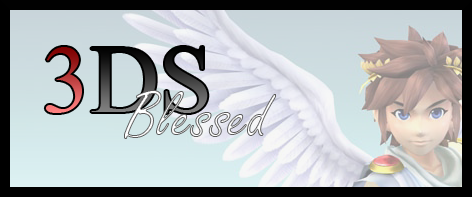Fire Emblem Fates – Full Review
After the huge success of Fire Emblem Awakening, it’s no surprise that Intelligent Systems would develop another title in the series. Fire Emblem Fates’ main selling point, as you probably already know, is the opportunity to select which route you wish to play at an early point in the game when the story branches. This review will cover what to expect in all three available routes: Birthright, Conquest, and Revelation.
Fire Emblem Fates, like the titles before it, is a grid based, turn based, strategy RPG in which you move ally units across a map, navigating terrain with various effects, and defeating enemy units. Each unit has their own level, stats, skills and equipment. The more you fight, the stronger that unit becomes and, as units level up, their attributes will increase and they will learn new skills based on their current class. The weapon triangle (a rock, paper scissors system that is a staple of the Fire Emblem franchise) has evolved slightly since Fire Emblem Awakening. Bows, magic, and hidden weapons are now added to the standard sword/axe/lance mix, providing an even more in depth mechanic to the combat system, and helpfully colour-coded to remind newcomers and veterans of the series alike.
So, why are there different version of the game you might ask? Well, to put it very simply, each version is its own game in a sense, with different recruit-able characters, themes, and storyline. Birthright sees the player take control of their Avatar to defend the peace-loving, Japanese-inspired country of Hoshido, whereas Conquest has the Avatar side with the glory-seeking nation of Nohr to attack Hoshido.

More RPG shenanigans from Intelligent Systems
In terms of narrative, the concept may sound extremely intriguing and unique at first glance, but don’t be fooled. While the Birthright route is your standard “fight off the bad guys, defend our homeland” storyline, the Conquest route sadly makes absolutely little to no sense considering the Avatar’s personality. The villains are transparent and have no apparent motives behind their actions. They are horribly written to the point of weeping hilarity. Titles such as Blazing Sword and Path of Radiance had decent writing, but Intelligent Systems hired some new faces to write this particular title instead.
Bad storyline aside, the gameplay is where Fire Emblem Fates really shines, mainly due to the fact that the weapons have been almost completely overhauled from previous entities in the franchise. By this I mean that weapons no longer break which, for someone who never liked micro managing the durability of my equipment in games, is a huge plus. Add to this the fact that every weapon category has their own bonuses and downsides, which adds even more to the tactical aspect of Fire Emblem. No longer can you throw a Silver Sword or an Elfire on an exceptionally strong unit, move them into a group of enemies and expect them to completely clear everything out within a turn without repercussions.
You may have heard through marketing that Birthright is the easier route, whereas Conquest is intended for more experience players; this is completely true. Gameplay in Birthright involves simple map design, map objectives, plus allows you to spend gold to fight enemies and grind your party up to suitable levels. Conquest, on the other hand, consists of more complex map design, timed objectives, and disallows free grinding, similar to the Fire Emblem games that are not Awakening or Sacred Stones. Despite having poor writing, Conquest boasts some of the more challenging and fun gameplay which even players playing on Normal difficulty would have a tough time with. As with Fire Emblem Awakening, the Normal, Hard, Lunatic, and Casual/Classic difficulty choices are there, but there is an additional mode in Fates called Phoenix, which revives fallen units the next turn after they fall.

Fire Emblem Fates promotional artwork
Map design is a huge improvement over Awakening’s. A new feature called Dragon Vein is present in Fire Emblem Fates. Within certain maps are specific points which certain characters can activate, changing the terrain or layout of certain areas of the map, including, but not limited to, making regeneration tiles appear, changing the terrain to provide easier access, or even lowering the stats of enemy units. At first, this may sound fascinating and fun to use. You may then wonder whether there is some double-edged sword aspect to this mechanic where you have to carefully decide WHEN to use these Dragon Veins to help turn the tide in battle. Well… yes and no. There are some very clever uses of the Dragon Vein mechanic here and there, but I feel that this concept is criminally underused. I felt that on most maps, you pretty much HAVE to use a Dragon Vein as soon as you find one, and without any repercussion, either. It’s honestly nothing to write home about.
Replacing the Barracks from Fire Emblem Awakening (in which you talk to your units and they randomly receive stat buffs and give you items) is the new My Castle feature. This is a home base that you return to after every chapter to freely walk around and customise/upgrade various facilities within (such as equipment shops, resource gathering points for materials to improve your weapons, and so on). By connecting online, you can challenge other players’ castles or defend your own castle against invaders by placing down your units in strategic locations and setting up siege weapons and walls with the buildings. It’s a fun little gimmick and I’ve already seen some very creative and interesting setups online. Defeating a player at their castle allows you to purchase a skill they have with one of their units, so that you may add that skill for your version of the same unit, as units are restricted to the skills of their own class and their marriage partner (which you may only select one of per playthrough).

The franchise’s iconic Weapon Triangle
I’ve neglected to mention the Revelation route up until this point, but it’s probably exactly what you think it is: a mash up of both Birthright and Conquest. It is not too easy or difficult, and you are able to recruit characters from both routes. Considered to be the canonical route of Fire Emblem Fates, Revelation takes the best of both routes and combines them into one game. The story is the most interesting of the three, but considering the game on all routes only has 21 chapters after the split, there’s very little time to establish the characters of Hoshido and Nohr and their relationship within Revelation. The game, instead, relies a little too much on the optional support conversations.
The game recommends playing through both Birthright and Conquest before tackling Revelation, which is a suggestion that I shall also make. I would also recommend going into the game with low expectations of the story and writing, it’s nothing spectacular. However, considering the superb gameplay, I would say it’s a more than fair trade off. Expect some of the best and most strategic action the Fire Emblem franchise has to offer and I’m confident that you’ll have an absolute blast through all three games. If you’re curious of my play time, both Birthright and Conquest took me around 20 hours, whereas Conquest took me around 16. These figures do not including any downloadable content (which there is an abundance of down the line).
I give Fire Emblem Fates a solid 8 out 10.
The Fire Emblem Fates page on Nintendo.com : http://fireemblemfates.nintendo.com/
Leave a Reply Cancel reply
-

-
3DSBlessed is a UK-based news and reviews website aiming to bring you the latest coverage pertaining to that most blessed of consoles : the Nintendo 3DS!
We also host a directory of upcoming gaming events in the Uk, so do be sure to check it out.
Upcoming events
no event
We Support…

Links

